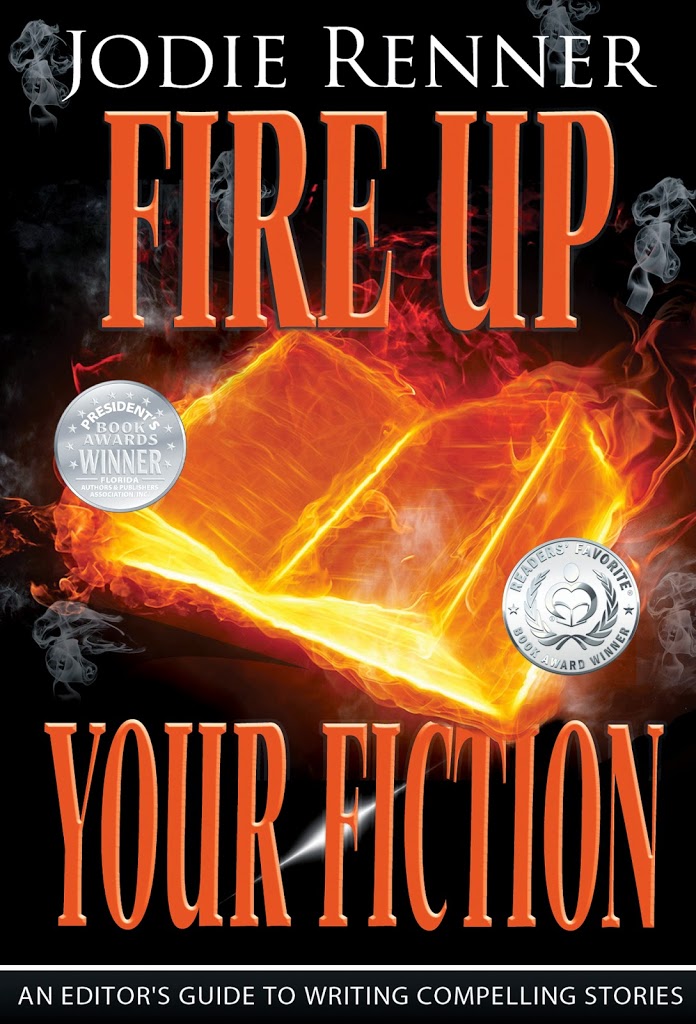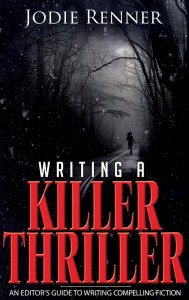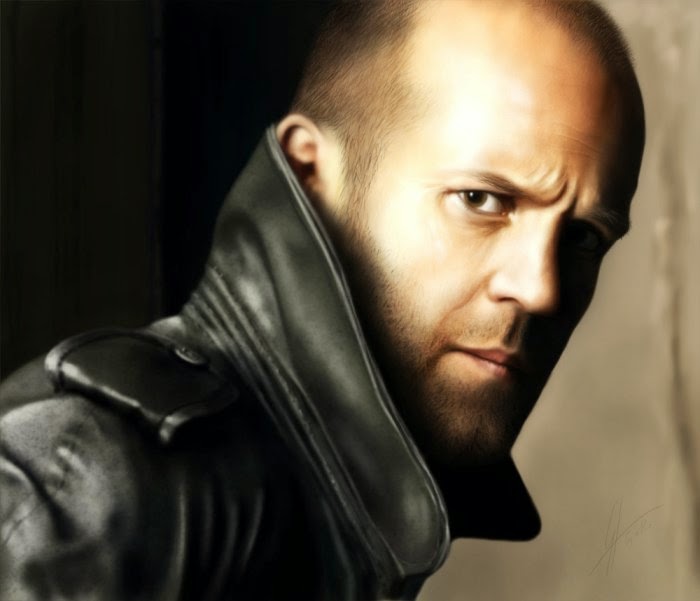 Jodie Renner, editor, author, speaker @JodieRennerEd
Jodie Renner, editor, author, speaker @JodieRennerEd
As I discussed in POV 101, in order to draw the reader in and grab him emotionally, every story needs to have a clearly dominant viewpoint character. We should meet that protagonist right away, preferably in the first paragraph, and the first chapter should be entirely from her point of view, so the reader knows whose story it is and can start bonding with her and rooting for her. When we see the story through her eyes, reacting as she does to her problems, it sucks us into the story and we want to keep reading to find out what happens to her.
In POV 102, I gave some tips for avoiding “head-hopping.” If we stick mainly with our main character, in his head and heart, with a bare minimum or no stepping back to describe things from the author’s stance (omniscient POV), we’re using deep point of view. Also called close third, this intimate viewpoint is a lot like first-person point of view, with the added freedom of switching to the villain’s or some other character’s POV when it suits our purpose. Deep POV is a powerful way of drawing your readers into your story quickly and making them worry about your hero right away, and keep worrying – which is exactly what you want!
But how do you go about this? Let’s suppose you’re writing a story about a macho, hero-type guy named Kurt, who defeats the villain, restores justice, and even gets the girl. It’s Kurt’s story so he’s your main viewpoint character. How do you make sure your handling of his viewpoint is as powerful as it can possibly be?
The first thing you need to do is imagine the setting, people and events as they would be perceived by Kurt, and only by him. As you write the story, you the writer must become Kurt. You see what he sees, and nothing more. You know what he knows, and nothing more. When Kurt walks into a bar, for example, you do not imagine how the bar looks from some god-like authorial stance high above, or as a movie camera might see it; you see it only as Kurt sees it, walking in purposefully and looking around.
And of course include his reactions to the other people in the bar. Show Kurt’s feelings (and only his) about what and who he’s seeing, and his reactions to the situation. Instead of saying, “The bar was noisy, dark and smoky,” say “The cigarette smoke in the air stung Kurt’s eyes and, in the dim light, he couldn’t make out if his target was there. As he looked around, the room started to quieten down. Heads turned, and eyes took him in, some curious, some hostile.” This way, the reader is seeing the scene through Kurt’s head and identifying with him, starting to worry about him. This from-the-inside-out approach is vital if you want your reader to care about your protagonist and get truly engaged in your story.
 But you need to go even further – you need to describe what he’s seeing and feeling by using words and expressions that he would normally use. If your character is a rancher or a drifter or a hard-boiled P.I, you’re not going to describe the scene or his reactions in highly educated, articulate, flowery terms, or tell about things he probably wouldn’t notice, like the color-coordination of the décor, the chandeliers, or the arrangement of dried flowers in an urn on the floor.
But you need to go even further – you need to describe what he’s seeing and feeling by using words and expressions that he would normally use. If your character is a rancher or a drifter or a hard-boiled P.I, you’re not going to describe the scene or his reactions in highly educated, articulate, flowery terms, or tell about things he probably wouldn’t notice, like the color-coordination of the décor, the chandeliers, or the arrangement of dried flowers in an urn on the floor.
It’s also important to be vigilant that your viewpoint doesn’t slip, so you’re suddenly giving someone else’s opinion about Kurt, or telling about something that’s happening out in the street or even in a hidden corner of the bar, while Kurt is still at the entrance of the bar. You can let the reader know other people’s reactions to Kurt, not by going into their heads at this point, but by what Kurt perceives—he sees their disapproving, admiring, angry, curious, or intense looks, picks up on their body language, hears their words and tone of voice, etc.
Then, in a later scene or chapter, you can go into the bad guy’s point of view and find out what he thinks of Kurt. Or, once he meets the girl, write a scene or chapter in her viewpoint so the reader finds out more about her and what she thinks of our hero Kurt.
This technique, properly used, will suck your readers effectively into your story world, where they really want to be, engaged, involved, and connected.
 You may also be interested in these related posts:
You may also be interested in these related posts:
~ Immerse Your Readers with Sensory Details
~ Show Your Characters’ Reactions to Bring Them Alive
~ Developing a Strong Third-Person Voice
~ Using Thought-Reactions to Add Attitude & Immediacy
Jodie Renner is a freelance fiction editor and the award-winning author of three craft-of-writing guides in her series An Editor’s Guide to Writing Compelling Fiction: Captivate Your Readers, Fire up Your Fiction, and Writing a Killer Thriller. She has also published two clickable time-saving e-resources to date: Quick Clicks: Spelling List and Quick Clicks: Word Usage. You can find Jodie at www.JodieRenner.com, www.JodieRennerEditing.com, her blog, http://jodierennerediting.blogspot.com/, and on Facebook, Twitter, and Google+.


The link to POV 101 goes to POV 102. Otherwise, awesome, thank you!
Thanks for letting me know about that link, George! I just fixed it. 🙂
Good post! I’ve been practicing Deep POV by reading a book called “Rivet Your Readers with Deep POV.” It’s short, but it’s a great way to help practice deep POV.
I do find though that being in Deep POV for too long can annoy me personally at times, so I don’t always stick super close to it. It’s all about reading the situation. I don’t like to go for Omniscient, but sometimes I do get a little shallow in my POV.
Just a personal preference.
Interesting, R.A. Thanks for sharing your ideas.
I’ve been writing some short stories and attempting ‘deep POV’. so this was very timely. Thanks Jodie for a post I am keeping beside me… just don’t tell Kurt. 😉
Thanks, Roland! Glad you found my posts on Deep POV helpful! 🙂
This is wonderful! I write mostly in first person, but there’s times I want to write in third and it feels rusty and not as close as first. I know there’s ways of going really deep into the POV but wasn’t exactly sure how to do that. These tips will help!
I have a question. I’m revising a book, written in first person from one POV, and I tried to show that what the main character assumed wasn’t always the reality. For example, there’s a guy she likes and she assumes that he doesn’t like her back. I tried to show her assumption, but also present events that clued the reader into the reality of the situation, like he went out of his way to bake her a cake or something.
It’s not quite as severe as being an unreliable narrator, but there’s always going to be a slight difference between how the main character perceives events and how they actually happened. Any thoughts on how to make sure that comes through clearly? And which doesn’t make the main character seem stupid?
I’m glad you found my tips helpful, Elizabeth. An advantage to third person is you can always show scenes or chapters from the POV of other significant characters, so you can have a few scenes/chapters from the viewpoint of this guy.
Also, you can have her friends telling her about things he does and says, or she’s starting to wonder if she’s right, given that he has said or done certain things that would indicate he likes her. You can show his words, body language, tone of voice, etc. as seen and interpreted by her, and no need to spell out to the readers that she’s probably misinterpreting or missing out on indicators she should be seeing, as readers will pick up what she isn’t by his tone of voice, words, body language, etc. Be careful not to make her too dumb or obtuse, as that can be annoying to readers, who will say “Oh, come on! Can’t you see that…?” Be sure to make sure misunderstanding are clearly possible, not as if merely created by the author to create conflict and advance the plot.
That last sentence should have been reread and smoothed out! LOL
Okay thanks! These are wonderful tips.
And it’s okay, you don’t have to be on call all the time, Jodie. 😉
🙂
Jodie, on my most recent first draft I wrote a second pov for the first time. I almost chickened out and didn’t do it! It’s the villain’s pov, and boy, that was fun. I learned to switch lanes in my brain. Now, how will it look during revision? I have no idea! But I’ll have fun finding out 🙂
Good for you, Julie! I’m sure the villain’s POV will add tension, suspense, and intrigue to your story – and make the readers worry more about your protagonist, because now they know how nasty the villain can be, and they know info about him the protagonist doesn’t!
Good stuff!
Thanks, Tom! 🙂
Establishing the main viewpoint is critical to drawing readers into a story. I have read fiction by newbies, some of it published, where the viewpoints jump around and you can’t get a grip on which person you’re supposed to sympathize with. Those books lack emotional impact. As a reader, I don’t care about the characters in that case. Like Jodie says, staying mostly in one person’s head will allow readers to identify with this character and feel their angst.
So true, Nancy! Thanks for your comments. 🙂